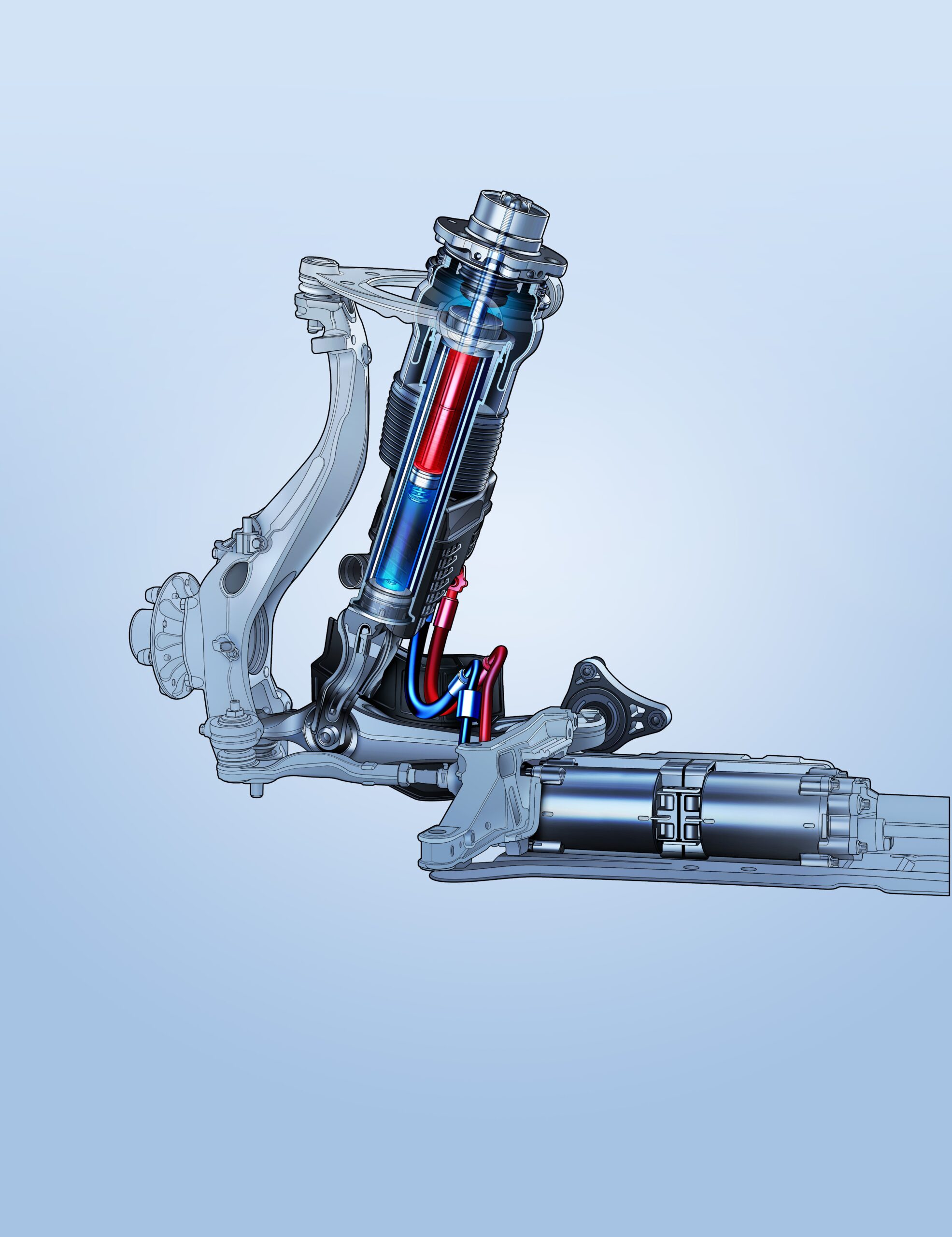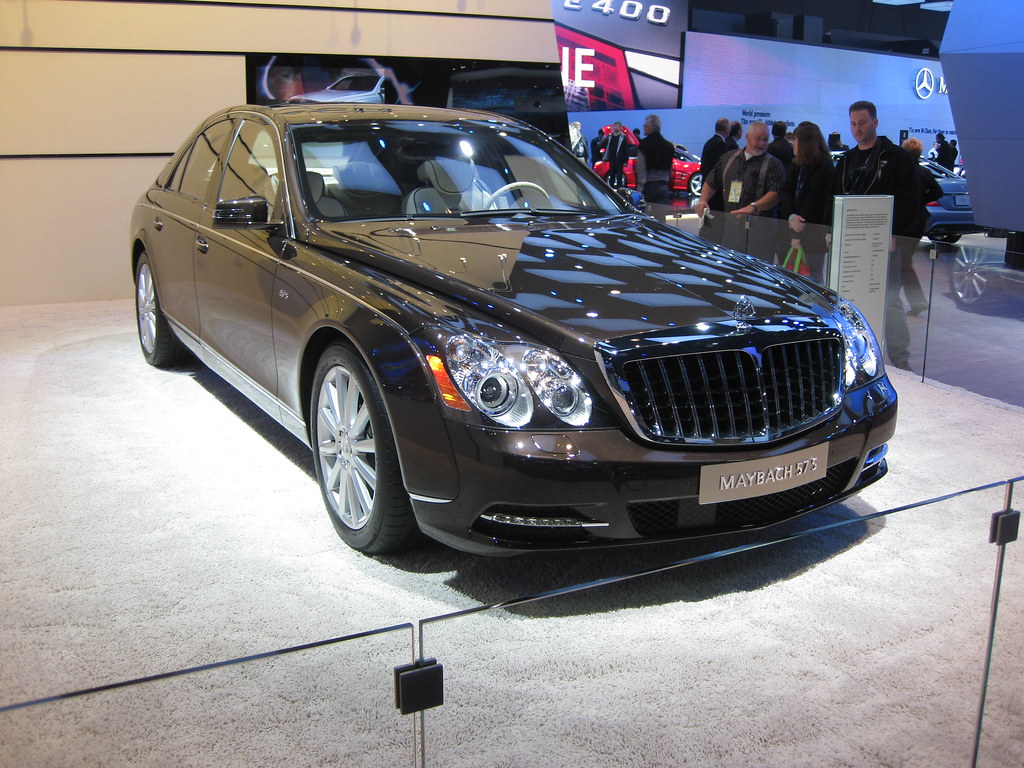There’s an undeniable allure to a high-mileage sports car. The price tag is often a fraction of a new model, making that dream machine suddenly feel within reach. You’re past the steepest depreciation curve, and you might even be getting a vehicle that’s been lovingly maintained by a previous owner who understood the value of a well-driven machine. It’s a compelling proposition for any enthusiast looking to get into some serious performance without breaking the bank. But let’s be real, beneath that shiny exterior and the promise of exhilarating drives, there often lurks a shadow of potential problems, especially when you start pushing past the 100,000-mile mark.
Indeed, owning a high-mileage car can sometimes feel like a thrilling, yet nerve-wracking, ride on a maintenance rollercoaster. These machines, while still capable of delivering joy and excitement, are reaching the twilight years of some of their crucial components. The journey from a pristine showroom model to a seasoned veteran of the road is paved with countless cycles of heat, stress, and wear. It’s not just about the numbers on the odometer; it’s about the cumulative effect of all those miles on every nut, bolt, and electrical connection.
For the intrepid buyer or current owner of a high-mileage performance vehicle, especially one as iconic as the Ford S197 Mustang, understanding these potential pitfalls isn’t just wise—it’s absolutely essential. We’re talking about more than just minor inconveniences; some of these issues can be truly crippling, leading to significant headaches, costly repairs, and even leaving you stranded. But fear not, because identifying these common problems is the first step toward proactive maintenance and keeping your cherished ride running smoothly for many more exhilarating miles. Let’s delve into some of the most pressing concerns that haunt these high-mileage heroes.

1. Engine Problems
When you talk about high-mileage cars, the engine is often the first component that comes to mind, and for good reason. It’s the heart of the vehicle, and after countless revolutions and explosions, it starts to show its age. Cars with high mileage and insufficient maintenance are notorious for developing engine issues that can range from minor annoyances to catastrophic failures. The constant strain on components like piston rings, for instance, can lead to them struggling to hold the engine’s combustion gases effectively.
This diminished sealing capability often manifests as the engine burning through oil much faster than it should, requiring frequent top-offs. Before even considering a high-mileage purchase, or if you already own one, the very first step in assessing engine health is a meticulous check of the engine oil itself. You’re looking not just at the level, but critically, at its quality and color. If the oil presents a gritty or dirty appearance, or if it’s dark and smells burned, these are red flags waving furiously, indicating that the engine might be in a bad state and demanding attention.
For owners of the 2005-2010 S197 Ford Mustangs equipped with the 4.0-liter ‘Cologne’ V6, the engine woes can be particularly pronounced. Beyond the general wear and tear, these specific engines are infamous for their timing chain issues. The timing chain guides and tensioners are known to fail, leading to what owners grimly refer to as the ‘death rattle.’ Replacing these parts is no simple task due to the engine’s design. Furthermore, issues like plastic thermostat housing failures, problematic EGR and PCV tubes, and harmonic balancer failures are significantly more common in these V6 models. Some even suffered bent valves due to spring issues, though Ford did issue a technical service bulletin to address this, along with the chain guides and tensioners. So, while metal replacement housings exist for the thermostat, a keen eye for these V6-specific ailments is crucial.
Read more about: Stellantis Navigates a Portfolio Reckoning: Which of its 8 Brands Face the Chopping Block by 2026?
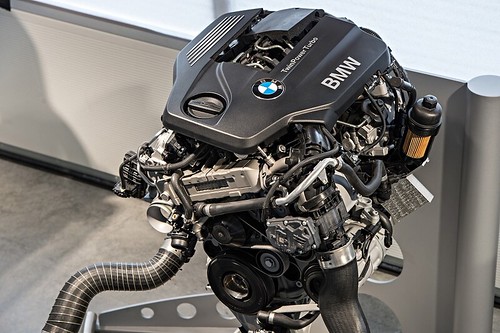
2. Failing Transmission
The transmission, arguably the second most vital component after the engine, also faces immense strain as miles accumulate. For virtually all cars, once they cross that 100,000-mile threshold, their transmission components begin to weaken. It’s not a question of if, but often when, issues will arise, making vigilant maintenance and an awareness of warning signs absolutely crucial for high-mileage vehicle owners. Ignoring these signals can lead to extremely costly repairs, often amounting to several thousands of dollars for a complete replacement.
The signs of a failing transmission are varied and unmistakable, demanding immediate attention. Drivers might experience difficulty in changing gears, a palpable burning smell—often indicative of overheating transmission fluid—or an unsettling shaking of the vehicle. Strange noises when the car is in neutral, slipping gears where the engine revs without a corresponding increase in speed, a warning light illuminating on the dashboard, or general unresponsiveness are all critical indicators. Car experts strongly advise against using high-mileage cars for heavy towing, as the added stress directly impacts transmission health. Regularly changing the transmission fluid, ideally every 10,000 miles, is a simple yet effective preventative measure.
Now, let’s talk about a particularly sore spot for owners of 2011-and-later S197 Ford Mustangs: the Getrag MT82 six-speed manual transmission. While initially seen as an upgrade to the earlier Tremec unit, this gearbox quickly became notorious for a litany of problems, even sparking class-action lawsuits. Owners reported gear clash, poor engagement, prematurely worn synchronizers, and, in severe cases, total transmission failure. This unit simply couldn’t handle the hard, high-rpm shifting that many Mustang enthusiasts demand, with some drivers even experiencing lock-outs from third gear during spirited driving.
Ford has acknowledged some of the MT82’s shortcomings through multiple Technical Service Bulletins (TSBs) and even revised the transmission for later Mustang models. For those with the afflicted units, there are pathways to improvement. Aftermarket solutions like short-throw shifters, stronger clutches, and shifter support brackets can significantly enhance durability and shifting quality. Even a seemingly minor detail like replacing the clutch fluid line, especially on 2011-2014 GTs, can make a noticeable difference. So, if you’re eyeing a stick-shift S197 from this era, be prepared to address its transmission at some point.
Read more about: Unlocking Peak Efficiency: Engineer-Backed Strategies to Boost Your Car’s MPG by 10 Without Changing Your Route

3. Electrical System Failures
In the intricate tapestry of modern automobiles, the electrical system is the nervous system, a complex web of sensors, wiring, fuses, relays, and control units that orchestrate everything from engine ignition to infotainment. As cars accumulate miles and years, these elaborate systems become increasingly susceptible to failure, leading to a host of frustrating and often debilitating problems. From sporadic malfunctions to complete vehicle immobilization, electrical gremlins are a common high-mileage horror.
Battery issues are a frequent culprit, often the first sign that the electrical system is struggling. As a car ages, the battery’s ability to maintain a charge diminishes, resulting in difficult starts or intermittent power to accessories. Corrosion on battery terminals or loose connections can exacerbate these problems, preventing proper current flow and causing various electrical components to malfunction. A simple check with a multimeter and ensuring clean, tight terminals can often identify and resolve these basic battery issues, but ultimately, an aging battery will need replacement to prevent future breakdowns.
Beyond the battery, wiring problems emerge as a significant headache in high-mileage vehicles. Over time, the constant vibrations, exposure to heat, cold, and moisture can lead to corroded connectors, frayed wires, or faulty grounds. These disruptions in the electrical flow can cause components to act erratically or fail entirely—think dim lights, power windows that stop working, or even engine misfires. Regular inspections are vital to catch these issues early, and while professional help is often needed for complex wiring, promptly addressing minor damage can prevent a cascade of more severe problems.
Alternator failure is another critical electrical system breakdown that looms large for high-mileage cars. The alternator is responsible for generating electricity to power the car’s electrical systems and recharge the battery. Signs of its impending demise include dimming headlights, a battery that consistently dies (even after charging), or unusual whining noises coming from the engine bay. These are clear warnings that the alternator is struggling to keep up with demand or has stopped producing power altogether, a situation that can quickly leave you stranded. Checking the alternator belt for wear and testing its output are crucial diagnostic steps.
Read more about: Urgent Safety Alert: 14 Critical Vehicle Recalls Drivers Must Understand Now
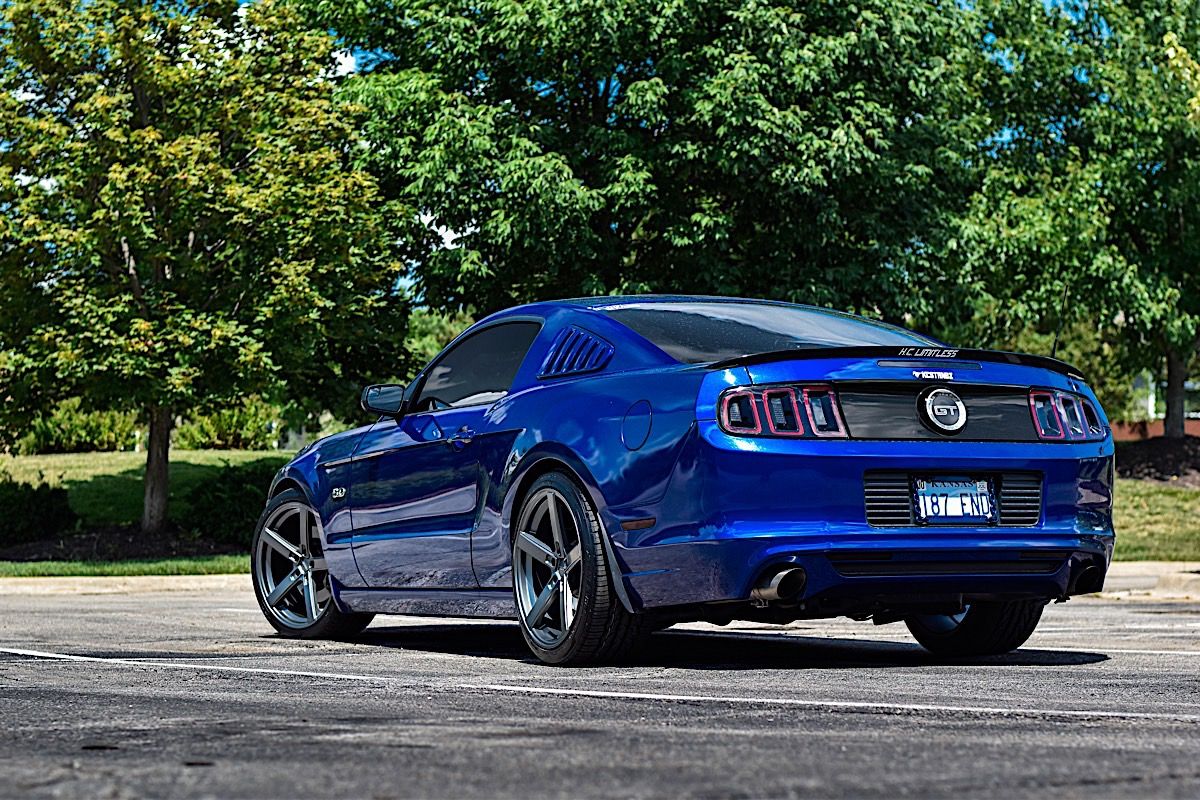
4. S197 Mustang Battery Drain Problems
While we’ve touched upon general electrical system failures, the S197 Ford Mustang, particularly earlier models, comes with its own notorious set of battery drain problems that warrant a focused discussion. This isn’t just about an old battery; it’s about a persistent and often perplexing issue that can rapidly deplete your pony car’s power, even when it’s not in use. It’s the kind of problem that tests an owner’s patience and diagnostic skills, leading to unexpected dead batteries and a frantic search for the culprit.
One significant source of rapid battery drain in high-mileage S197 Mustangs, as documented by owners and automotive resources, is alternator diode failure. The alternator might appear to be spinning correctly, but a compromised diode means it’s simply not sending sufficient, or any, electricity back to the battery or to power essential accessories. This issue seems to be particularly prevalent in pre-2010 alternators. If your 2005-2009 S197 is constantly needing a jump or has a rapidly draining battery, a faulty alternator is a prime suspect. The good news is that owners have often found success by replacing the problematic unit with the revised 2010-and-later version, which appears to be more robust.
Another insidious cause of battery drain, especially relevant to the S197 platform, stems from water ingress issues. We’ve already highlighted how weather seals can dry up and rain gutters can clog with age. This isn’t just a convertible problem; non-convertible S197s can also develop door and body seal issues, allowing water to sneak into the cabin. When this water reaches critical electrical components, particularly the passenger-side-mounted Smart Junction Box (SJB), it can wreak havoc. A soaked SJB often leads to persistent battery drain, as the compromised electronics draw power continuously, even when the car is off. Identifying and sealing these leaks is paramount to preventing such an electrical nightmare.
Finally, a persistent claim among S197 owners points to the optional Shaker 500 and 1000 audio systems as potential sources of parasitic battery draw. While Ford has not issued an official diagnosis on this specific claim, numerous forum members have identified the system’s amplifiers as drawing power even when the car is parked. If you’ve exhausted other diagnostic avenues—checking the alternator, sealing up potential water leaks to the SJB—and your S197 still suffers from battery drain, investigating a possible draw from your Shaker audio system might be the next logical, albeit frustrating, step. It’s a niche problem, but one that can certainly keep you from starting your car.
Car Model Information: 2023 Ford Mustang Mach-E GT
Name: Ford Mustang
Caption: 2018 Ford Mustang GT 5.0
Aka: Ford T5 (Germany)
Manufacturer: Ford Motor Company
Production: March 1964 – present
ModelYears: 1965–present
Class: Unbulleted list
BodyStyle: Unbulleted list
Layout: Front-engine, rear-wheel-drive layout
Categories: 1970s cars, 1980s cars, 1990s cars, 2+2 coupés, 2000s cars
Summary: The Ford Mustang is an American automobile manufactured and marketed by Ford since 1964, as Ford’s longest nameplate in continuous production. Currently in its seventh generation, it is the fifth-best selling Ford car nameplate. The namesake of the “pony car” automobile segment, the Mustang was developed as a highly styled line of sporty coupes and convertibles derived from existing model lines, initially distinguished by its pronounced “long hood, short deck” proportions.
Originally predicted to sell 100,000 vehicles yearly, the 1965 Mustang became the most successful vehicle launch since the 1927 Model A. Introduced on April 17, 1964 (16 days after the Plymouth Barracuda), over 400,000 units were sold in its first year; the one-millionth Mustang was sold within two years of its launch. In August 2018, Ford produced the 10-millionth Mustang; matching the first 1965 Mustang, the vehicle was a 2019 Wimbledon White convertible with a V8 engine.
The success of the Mustang launch led to multiple competitors from other American manufacturers, including the Chevrolet Camaro and Pontiac Firebird (1967), AMC Javelin (1968), and Dodge Challenger (1970). It also competed with the Plymouth Barracuda, which was launched around the same time. The Mustang also had an effect on designs of coupes worldwide, leading to the marketing of the Toyota Celica and Ford Capri in the United States (the latter, by Lincoln-Mercury). The Mercury Cougar was launched in 1967 as a unique-bodied higher-trim alternative to the Mustang; during the 1970s, it included more features and was marketed as a personal luxury car.
From 1965 until 2004, the Mustang shared chassis commonality with other Ford model lines, staying rear-wheel-drive throughout its production. From 1965 to 1973, the Mustang was derived from the 1960 Ford Falcon compact. From 1974 until 1978, the Mustang (denoted Mustang II) was a longer-wheelbase version of the Ford Pinto. From 1979 until 2004, the Mustang shared its Fox platform chassis with 14 other Ford vehicles (becoming the final one to use the Fox architecture). Since 2005, Ford has produced two generations of the Mustang, each using a distinct platform unique to the model line.
Through its production, multiple nameplates have been associated with the Ford Mustang series, including GT, Mach 1, Boss 302/429, Cobra (separate from Shelby Cobra), and Bullitt, along with “5.0” fender badging (denoting 4.9 L OHV or 5.0 L DOHC V8 engines).
Get more information about: Ford Mustang
Buying a high-performing used car >>>
Brand: Ford Model: Mustang
Price: $34,999 Mileage: 14,483 mi.

5. Water Pump Leakage and Cooling System Troubles
Keeping an engine at its optimal operating temperature is non-negotiable for longevity and performance, and this duty falls squarely on the cooling system, with the water pump playing a starring role. For high-mileage cars, the cooling system is a frequent source of trouble, often leading to frustrating and potentially engine-damaging issues. It’s a common headache for many drivers, and having faced these issues firsthand, the frustration they can cause is perfectly understandable.
Water pump leaks are particularly common, with many vehicles showing a high risk of developing them between 60,000 to 90,000 miles. The water pump’s crucial function is to circulate engine coolant, which prevents the engine from dangerously overheating. When it fails, the consequences can be severe. Signs to watch for include visible coolant leaks on your driveway or garage floor, an audible whining noise emanating from the engine bay, the engine frequently overheating, or even steam rising from under the hood. The presence of rust in various areas of the cooling system can also point to a longstanding leakage problem.
Beyond the water pump itself, the entire cooling system can develop issues over time. Components like hoses can become brittle and crack, radiators can develop leaks, and thermostats can fail to regulate temperature properly. Regularly inspecting for any signs of coolant leaks, monitoring your coolant levels, and topping them up as needed are fundamental maintenance practices. Low coolant levels severely impede heat dissipation, directly leading to engine overheating.
Over time, coolant itself degrades and becomes contaminated, losing its effectiveness. Therefore, considering a full flush of the cooling system and replacing the coolant regularly is a highly recommended practice for high-mileage vehicles. This ensures the system operates optimally, allowing for efficient heat transfer and protecting your engine from the significant damage that overheating can inflict. Staying proactive with these cooling system checks can save you from a major breakdown and a hefty repair bill.
Read more about: Engine Specialist’s Essential Guide: Master Hill Climbs and Prevent Overheating Without Ever Pulling Over
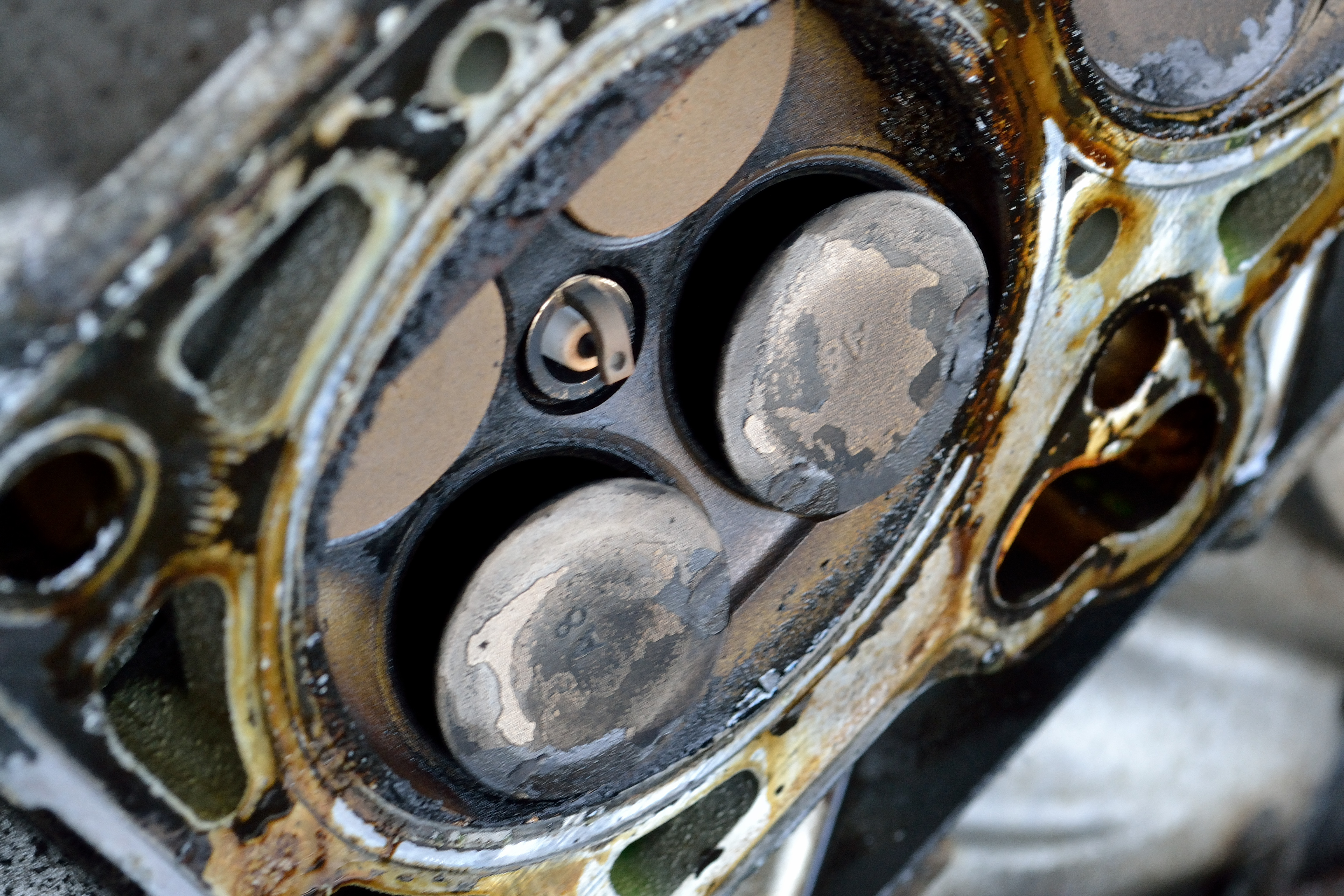
6. Failing Timing Belts
Often unseen but absolutely critical, the timing belt is one of those components that, when it fails, brings everything to a grinding, often destructive, halt. Its function is meticulously precise: to synchronize the movement of the crankshaft and the camshaft, ensuring the engine’s valves open and close at precisely the right moments for smooth, efficient combustion. This mechanical dance is fundamental to your engine’s operation, underscoring the vital need for a timing belt in peak condition.
A timing belt failure is rarely graceful and can lead to catastrophic engine damage, especially in ‘interference’ engines where valves and pistons can collide. Luckily, these critical failures don’t usually happen without warning. Timing belt failures commonly occur between the 60,000 and 100,000-mile mark, so if your high-mileage vehicle is approaching or has passed this threshold, extra vigilance is advised. There are several clear indicators that a timing belt is nearing the end of its life, and recognizing them can save you from a much larger expense.
One of the most noticeable symptoms is a ticking noise coming from the engine. This can indicate a loose or worn belt affecting valve timing. Other warning signs include unresponsive ignition, where the car struggles to start or simply won’t turn over at all, and oil leakage around your engine, which might signify a degraded front main seal often associated with timing belt components. Furthermore, exhaust problems, such as the engine emitting unusual smoke, and RPM malfunctions, where the engine’s revolutions per minute behave erratically, can all point to timing belt issues.
Once you observe any of these symptoms, it’s imperative to have the timing belt inspected and, if necessary, replaced urgently. Delaying replacement can lead to the belt completely snapping, which can instantly ruin your engine and result in repairs that far exceed the cost of a preventative belt change. Experts widely recommend that your timing belt, along with related components like the water pump and tensioners, be changed every 100,000 miles as a crucial piece of routine maintenance, transforming a potential crisis into a manageable service.
Read more about: Unlocking Peak Efficiency: Engineer-Backed Strategies to Boost Your Car’s MPG by 10 Without Changing Your Route
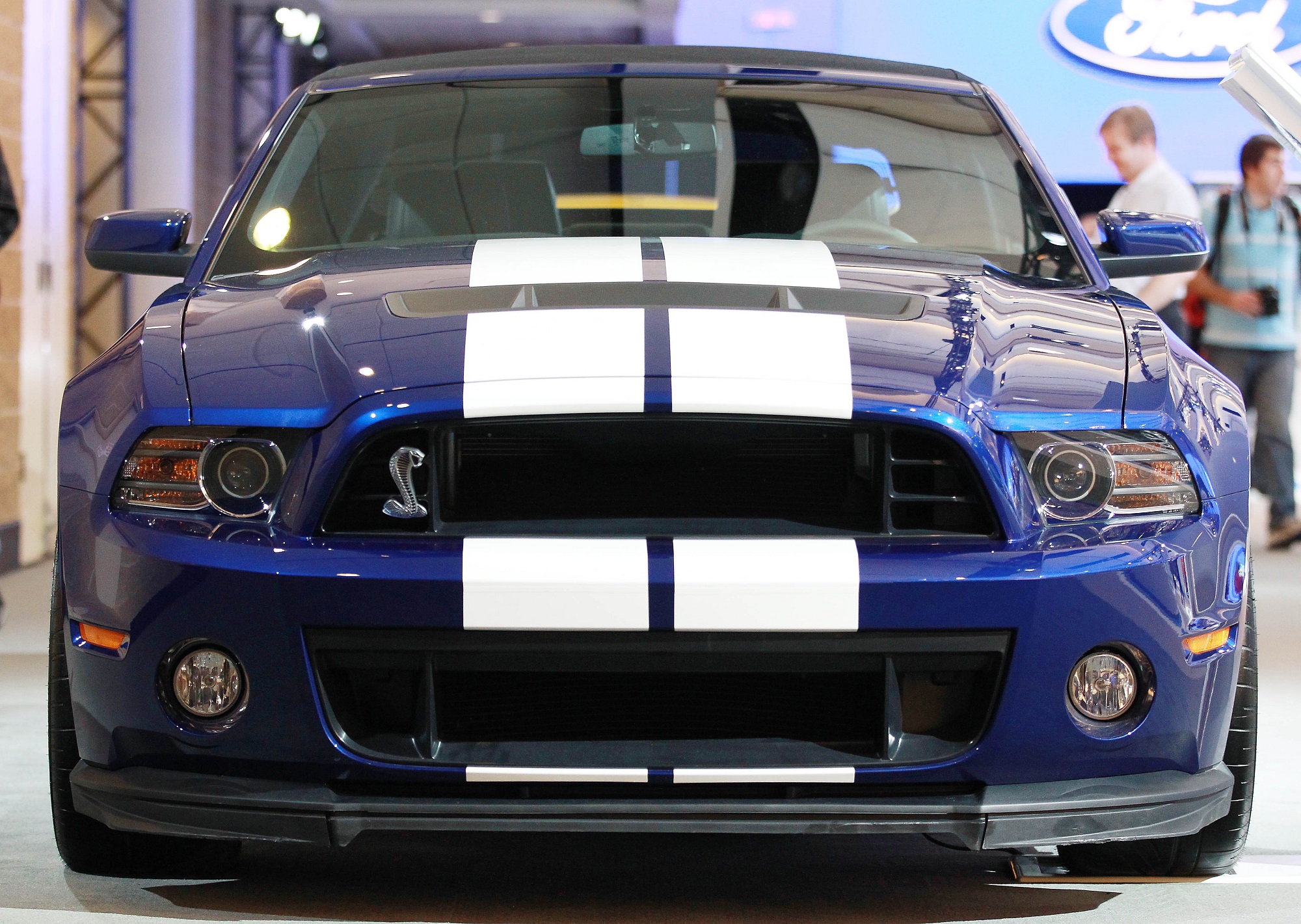
7. S197 Mustang Sensor Problems
Modern vehicles rely on an intricate network of sensors to monitor virtually every aspect of engine and vehicle operation, feeding crucial data to the engine control unit (ECU). As high-mileage cars age, these sensors, exposed to constant heat, vibration, and contaminants, are prone to failure. While sensor issues are not unique to any single model, S197 Ford Mustangs often experience various sensor malfunctions more frequently than some other platforms as the miles pile up, contributing to a range of performance issues and frustrating dashboard lights.
One of the most common culprits behind an illuminated Check Engine Light and a rough-running engine in S197 Mustangs is a dirty mass airflow (MAF) sensor and/or a clogged throttle body. The MAF sensor measures the amount of air entering the engine, and when it’s fouled with debris, it sends incorrect data, disrupting the air-fuel mixture. Similarly, a dirty throttle body can impede proper airflow. Fortunately, both components can often be cleaned relatively easily, though caution is advised with the electronic throttle body to avoid damage. If cleaning doesn’t resolve the issue, it could point to the engine control sensor itself, which is also known to go bad.
Beyond MAF and throttle body issues, S197 Ford Mustangs can also develop problems with their manifold absolute pressure (MAP) sensors and differential pressure EGR (DPFE) sensors. These sensors play vital roles in measuring manifold pressure and monitoring exhaust gas recirculation, respectively. When they fail, they can lead to poor fuel economy, rough idling, hesitation, and of course, a persistent Check Engine Light. These MAP and DPFE sensor issues have been observed to affect both the older 4.0-liter Cologne V6 and the 4.6-liter V8 engines found in the pre-2011 GT and Bullitt models.
Interestingly, the later S197 engines—specifically the 5.0-liter Coyote V8 and the 3.7-liter Duratec V6 introduced in 2011—appear to be less susceptible to these particular MAP and DPFE sensor problems. This suggests some design improvements in the later iterations. However, regardless of the engine, staying vigilant for any changes in engine performance or the appearance of warning lights is key. A faulty sensor might seem minor, but it can throw off the entire engine management system, leading to inefficient operation, increased emissions, and potentially more serious damage if left unaddressed.
Car Model Information: 2023 Ford Mustang Mach-E GT
Name: Ford Mustang
Caption: 2018 Ford Mustang GT 5.0
Aka: Ford T5 (Germany)
Manufacturer: Ford Motor Company
Production: March 1964 – present
ModelYears: 1965–present
Class: Unbulleted list
BodyStyle: Unbulleted list
Layout: Front-engine, rear-wheel-drive layout
Categories: 1970s cars, 1980s cars, 1990s cars, 2+2 coupés, 2000s cars
Summary: The Ford Mustang is an American automobile manufactured and marketed by Ford since 1964, as Ford’s longest nameplate in continuous production. Currently in its seventh generation, it is the fifth-best selling Ford car nameplate. The namesake of the “pony car” automobile segment, the Mustang was developed as a highly styled line of sporty coupes and convertibles derived from existing model lines, initially distinguished by its pronounced “long hood, short deck” proportions.
Originally predicted to sell 100,000 vehicles yearly, the 1965 Mustang became the most successful vehicle launch since the 1927 Model A. Introduced on April 17, 1964 (16 days after the Plymouth Barracuda), over 400,000 units were sold in its first year; the one-millionth Mustang was sold within two years of its launch. In August 2018, Ford produced the 10-millionth Mustang; matching the first 1965 Mustang, the vehicle was a 2019 Wimbledon White convertible with a V8 engine.
The success of the Mustang launch led to multiple competitors from other American manufacturers, including the Chevrolet Camaro and Pontiac Firebird (1967), AMC Javelin (1968), and Dodge Challenger (1970). It also competed with the Plymouth Barracuda, which was launched around the same time. The Mustang also had an effect on designs of coupes worldwide, leading to the marketing of the Toyota Celica and Ford Capri in the United States (the latter, by Lincoln-Mercury). The Mercury Cougar was launched in 1967 as a unique-bodied higher-trim alternative to the Mustang; during the 1970s, it included more features and was marketed as a personal luxury car.
From 1965 until 2004, the Mustang shared chassis commonality with other Ford model lines, staying rear-wheel-drive throughout its production. From 1965 to 1973, the Mustang was derived from the 1960 Ford Falcon compact. From 1974 until 1978, the Mustang (denoted Mustang II) was a longer-wheelbase version of the Ford Pinto. From 1979 until 2004, the Mustang shared its Fox platform chassis with 14 other Ford vehicles (becoming the final one to use the Fox architecture). Since 2005, Ford has produced two generations of the Mustang, each using a distinct platform unique to the model line.
Through its production, multiple nameplates have been associated with the Ford Mustang series, including GT, Mach 1, Boss 302/429, Cobra (separate from Shelby Cobra), and Bullitt, along with “5.0” fender badging (denoting 4.9 L OHV or 5.0 L DOHC V8 engines).
Get more information about: Ford Mustang
Buying a high-performing used car >>>
Brand: Ford Model: Mustang
Price: $34,999 Mileage: 14,483 mi.

8. Rusted Areas and S197 Paint/Corrosion Issues
The unfortunate truth about high-mileage heroes is that they’ve seen a lot of roads, and with those roads often comes a grim enemy: rust. It’s a general phenomenon for cars past the 100,000-mile mark, and it’s particularly aggressive in regions plagued by frequent downpours, road salt, or snow. This isn’t just a cosmetic flaw; rust has an insidious way of spreading, quietly compromising the structural integrity of your beloved vehicle.
While superficial rust might start as a minor annoyance, easily tackled with a bit of sanding, priming, and repainting, leaving it unchecked is a recipe for disaster. Untreated rust eats away at the car’s body, transforming solid metal into flaky, porous material and eventually leaving gaping holes. At that point, simple remedies are no longer enough, and you’re looking at costly welding repairs to restore the vehicle’s bodywork, significantly adding to your ownership expenses.
For S197 Ford Mustang owners, this isn’t just a general concern; it’s a particularly well-documented Achilles’ heel. The dreaded paint blistering and failure is actually the second worst S197 Ford Mustang issue on CarComplaints, an alarming statistic for a car celebrated for its iconic looks. This blistering isn’t just poor aesthetics; it creates perfect pockets for water to become trapped, especially around the hood area, which explains why rusted hoods rank as the #1 and #3 S197 Ford Mustang problems.
Adding insult to injury, these paint and corrosion issues are compounded by other age-related vulnerabilities, particularly in convertible S197 models. As any high-mileage drop-top owner can attest, weather seals inevitably dry up and rain gutters often become clogged with debris over time. This unwelcome water ingress isn’t just about mold and mildew; it can lead to more serious, and frustrating, electrical issues as moisture finds its way to sensitive components. Keeping an eye on your car’s exterior isn’t just about pride, it’s about preservation.
Car Model Information: 2023 Ford Mustang Mach-E GT
Name: Ford Mustang
Caption: 2018 Ford Mustang GT 5.0
Aka: Ford T5 (Germany)
Manufacturer: Ford Motor Company
Production: March 1964 – present
ModelYears: 1965–present
Class: Unbulleted list
BodyStyle: Unbulleted list
Layout: Front-engine, rear-wheel-drive layout
Categories: 1970s cars, 1980s cars, 1990s cars, 2+2 coupés, 2000s cars
Summary: The Ford Mustang is an American automobile manufactured and marketed by Ford since 1964, as Ford’s longest nameplate in continuous production. Currently in its seventh generation, it is the fifth-best selling Ford car nameplate. The namesake of the “pony car” automobile segment, the Mustang was developed as a highly styled line of sporty coupes and convertibles derived from existing model lines, initially distinguished by its pronounced “long hood, short deck” proportions.
Originally predicted to sell 100,000 vehicles yearly, the 1965 Mustang became the most successful vehicle launch since the 1927 Model A. Introduced on April 17, 1964 (16 days after the Plymouth Barracuda), over 400,000 units were sold in its first year; the one-millionth Mustang was sold within two years of its launch. In August 2018, Ford produced the 10-millionth Mustang; matching the first 1965 Mustang, the vehicle was a 2019 Wimbledon White convertible with a V8 engine.
The success of the Mustang launch led to multiple competitors from other American manufacturers, including the Chevrolet Camaro and Pontiac Firebird (1967), AMC Javelin (1968), and Dodge Challenger (1970). It also competed with the Plymouth Barracuda, which was launched around the same time. The Mustang also had an effect on designs of coupes worldwide, leading to the marketing of the Toyota Celica and Ford Capri in the United States (the latter, by Lincoln-Mercury). The Mercury Cougar was launched in 1967 as a unique-bodied higher-trim alternative to the Mustang; during the 1970s, it included more features and was marketed as a personal luxury car.
From 1965 until 2004, the Mustang shared chassis commonality with other Ford model lines, staying rear-wheel-drive throughout its production. From 1965 to 1973, the Mustang was derived from the 1960 Ford Falcon compact. From 1974 until 1978, the Mustang (denoted Mustang II) was a longer-wheelbase version of the Ford Pinto. From 1979 until 2004, the Mustang shared its Fox platform chassis with 14 other Ford vehicles (becoming the final one to use the Fox architecture). Since 2005, Ford has produced two generations of the Mustang, each using a distinct platform unique to the model line.
Through its production, multiple nameplates have been associated with the Ford Mustang series, including GT, Mach 1, Boss 302/429, Cobra (separate from Shelby Cobra), and Bullitt, along with “5.0” fender badging (denoting 4.9 L OHV or 5.0 L DOHC V8 engines).
Get more information about: Ford Mustang
Buying a high-performing used car >>>
Brand: Ford Model: Mustang
Price: $34,999 Mileage: 14,483 mi.
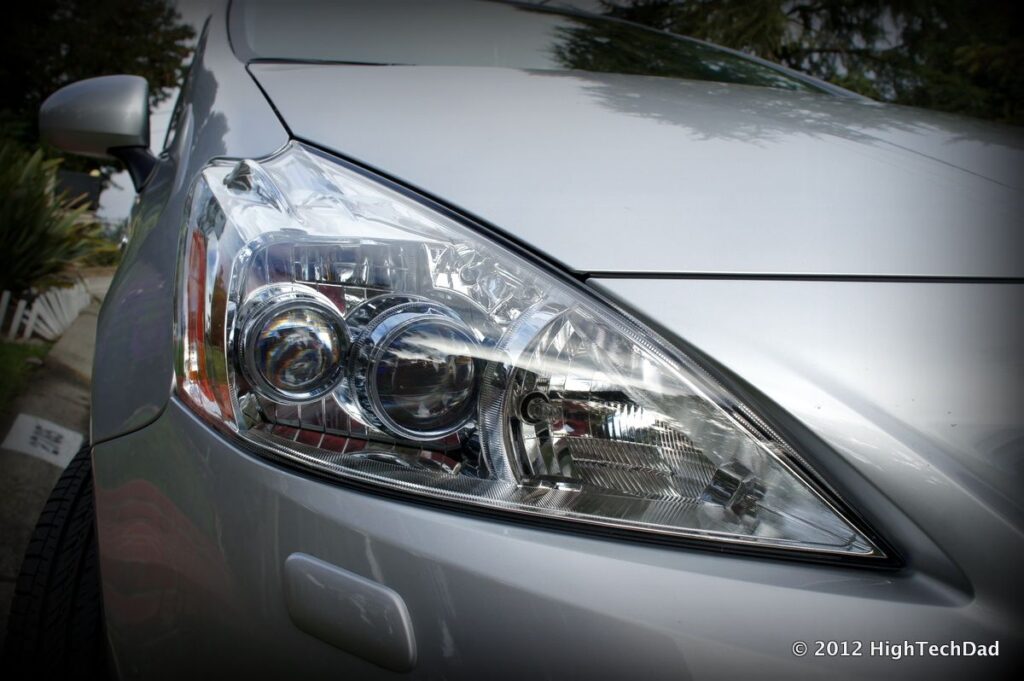
9. Challenging Headlight Issues
Driving a high-mileage car often means inheriting a vehicle that has literally seen better days, and this unfortunately extends to its vision. Headlight issues are a common frustration, particularly for night driving, where dim or unreliable illumination can transform a simple commute into a white-knuckle experience, posing untold hazards for drivers and passengers alike. It’s a crucial safety component that often gets overlooked until it’s too late.
The root of these dim and unreliable lights isn’t usually a simple bulb replacement. More often, it stems from a weakened or clouded lens. Over years of exposure, the headlight plastic succumbs to a relentless assault from various environmental factors. The constant vibrations of the car, the radiant heat generated from the engine bay, abrasive dust and road debris, and the relentless onslaught of solar radiation all contribute to the degradation, hazing, and yellowing of the lens material.
This degradation significantly reduces the amount of light projected onto the road, making it difficult to properly see obstacles, road signs, and even other vehicles. This isn’t just an inconvenience; it’s a genuine safety concern. Your ability to react to sudden changes in driving conditions is directly tied to how well you can see, and compromised headlights severely hinder that vital capacity. Ensuring optimal night vision is paramount for both your safety and that of others on the road.
When it comes time for replacement, high-mileage cars can throw another curveball: compatibility. Not all aftermarket headlights are universally compatible. You might find that the connectors simply don’t align with your car’s specific wiring harness, or the housing doesn’t fit correctly, rendering the replacement impossible without significant modification. Therefore, it’s absolutely crucial to “always check the product to see if it will work with your car’s model” before making a purchase, saving yourself from a frustrating installation headache.
Read more about: Urgent Safety Alert: 14 Critical Vehicle Recalls Drivers Must Understand Now

10. Critical Suspension and Steering Woes
Every mile your high-mileage sports car racks up is a mile where its suspension and steering components are working tirelessly. They absorb countless bumps, potholes, and twists, and just like any hardworking athlete, they eventually start to show signs of fatigue. The accumulated stress from years of navigating varied road conditions inevitably leads to significant wear and tear, impacting both ride quality and safety.
As these critical systems age, specific components become particularly vulnerable. We’re talking about the silent heroes like worn-out shocks and struts, crucial ball joints, precision tie rods, and the often-overlooked bushings. These parts are designed to dampen road forces, maintain tire contact, and provide responsive control. When they start to degrade, the once-sharp handling of your sports car can quickly devolve into a vague, unnerving experience.
The symptoms of these issues are often unmistakable, if you know what to look for. A ride that suddenly feels “bouncy or unstable” is a clear red flag, often indicating problems with your shock absorbers or struts. If you’re experiencing “steering wheel vibrations” that weren’t there before, or a frustrating “tendency for the vehicle to drift to one side” without input, it’s highly likely that worn-out tie rods or ball joints are the culprits. These aren’t minor quirks; they’re warnings.
Ignoring these critical suspension and steering problems is not just about tolerating an uncomfortable ride. It’s a direct gamble with your vehicle’s safety and overall handling capability. The responsiveness you rely on in emergency maneuvers can be severely compromised, putting you and your passengers at risk. The good news is that proactive “regular inspections, timely replacements, and using quality parts” can maintain the integrity of these systems, ensuring a smoother, safer, and more predictable ride for many more miles.
Read more about: Total Regret with Every Service: 15 Vehicles Owners Vow They Would ‘Unbuy’ If They Had a Time Machine
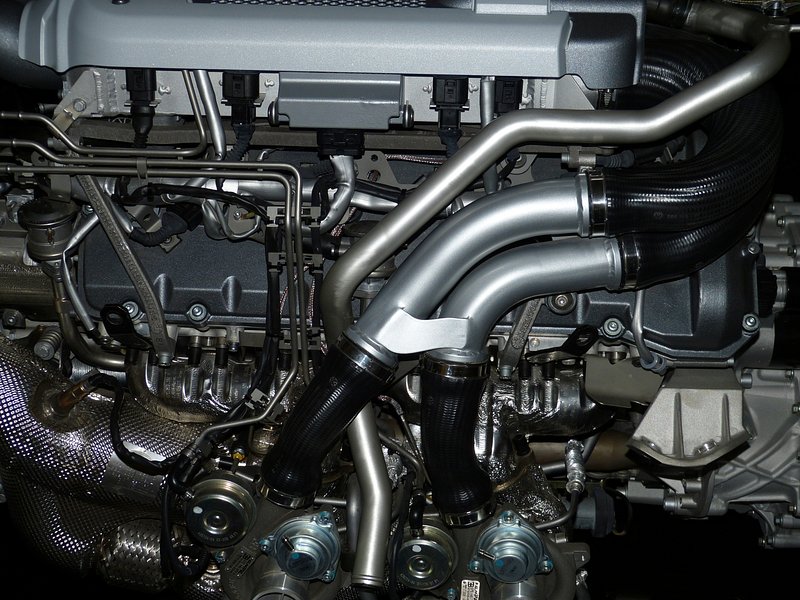
11. Environmental and Performance-Impacting Exhaust System Concerns
As we transition from the underpinnings of your high-mileage machine, let’s turn our attention to its voice and breath: the exhaust system. This crucial network of pipes, mufflers, and catalytic converters endures a relentless beating from heat, moisture, and road salt, making it another prime candidate for age-related problems in high-mileage vehicles. Over time, these components are practically begging for attention.
One of the most common issues that plague aging exhaust systems is the insidious spread of rust and corrosion. This isn’t just an unsightly affliction; it’s a destructive force that can lead to holes forming in your exhaust pipes or muffler. The immediate, and often embarrassing, consequence is a cacophony of loud, obnoxious noises emanating from under your car. Far more concerning, however, is the potential for “harmful fumes to enter the vehicle cabin,” posing a serious health risk to occupants.
Beyond the noise and potential cabin intrusion, the exhaust system plays a surprisingly vital environmental role. The catalytic converter, in particular, is an unsung hero, responsible for reducing harmful emissions released into the atmosphere. A failing catalytic converter isn’t just bad for performance; it can “result in increased air pollution,” transforming your once-proud machine into an environmental offender. Addressing any exhaust system concerns promptly is paramount, not just for your vehicle’s performance, but for its ecological footprint as well.
The key to mitigating these concerns, as with many high-mileage woes, lies in vigilance. “Regular inspections and maintenance” are your best defense, allowing you to catch and “repairing small issues early on” before they escalate into “more extensive and costly repairs.” If you start noticing “any unusual noises, vibrations, or smells coming from your exhaust system,” don’t hesitate. It’s a clear signal from your car that a qualified mechanic needs to take a look, ensuring your ride stays quiet, clean, and compliant.
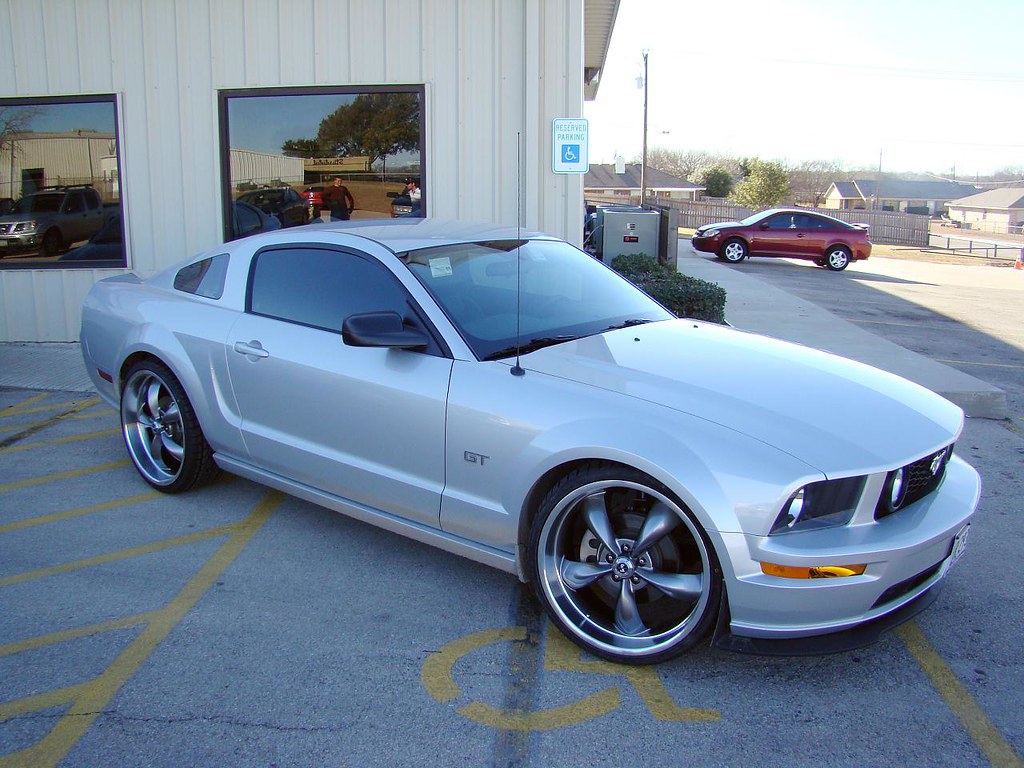
12. Unique Chassis Flex Problems of S197 Mustang Convertibles
For those who crave the open air and the rumble of a Mustang, the S197 Convertible holds a special appeal. However, the allure of a drop-top often comes with a trade-off, particularly in earlier high-mileage examples of this generation. The fundamental act of “chopping the roof off any car” inherently reduces its structural rigidity, a sacrifice that manifests in a specific set of challenges for S197 Mustang Convertibles.
This reduced rigidity isn’t just an abstract engineering concept; it translates directly into a real-world driving experience. Compromised “handling” is often the first thing enthusiasts notice, as the car feels less precise and more ‘wobbly’ through corners. But it also impacts “comfort” and, in a roundabout way, “build quality.” For the 2005-2009 S197 Mustang Convertibles, the chassis could flex so much that drivers reported “the windshield starts shaking” – a jarring experience that goes beyond mere “noticeable cowl shake” and points to significant structural movement.
Thankfully, Ford wasn’t oblivious to these issues, and they took steps to address them with the “2010 Mustang refresh.” These later S197 models received some much-needed attention, inheriting “stiffer springs and recalibrated shocks from the 2008 Bullitt” and benefiting from “some extra chassis reinforcements.” The improvements continued into 2011, when a “front strut-tower brace became standard on the GT Convertible,” further bolstering the car’s structural integrity and mitigating unwanted flex.
For owners of pre-2010 S197 Ford Mustang Convertibles, hope is not lost. The aftermarket community has stepped up, offering a variety of “S197-specific chassis bracing,” including the crucial strut-tower braces for earlier cars. These additions can significantly improve rigidity and reduce cowl shake. However, if you’re not keen on extensive modifications, your best bet is to “shop for a 2010-or-later car” to enjoy a more solid and composed open-top Mustang experience right off the bat.
Car Model Information: 2023 Ford Mustang Mach-E GT
Name: Ford Mustang
Caption: 2018 Ford Mustang GT 5.0
Aka: Ford T5 (Germany)
Manufacturer: Ford Motor Company
Production: March 1964 – present
ModelYears: 1965–present
Class: Unbulleted list
BodyStyle: Unbulleted list
Layout: Front-engine, rear-wheel-drive layout
Categories: 1970s cars, 1980s cars, 1990s cars, 2+2 coupés, 2000s cars
Summary: The Ford Mustang is an American automobile manufactured and marketed by Ford since 1964, as Ford’s longest nameplate in continuous production. Currently in its seventh generation, it is the fifth-best selling Ford car nameplate. The namesake of the “pony car” automobile segment, the Mustang was developed as a highly styled line of sporty coupes and convertibles derived from existing model lines, initially distinguished by its pronounced “long hood, short deck” proportions.
Originally predicted to sell 100,000 vehicles yearly, the 1965 Mustang became the most successful vehicle launch since the 1927 Model A. Introduced on April 17, 1964 (16 days after the Plymouth Barracuda), over 400,000 units were sold in its first year; the one-millionth Mustang was sold within two years of its launch. In August 2018, Ford produced the 10-millionth Mustang; matching the first 1965 Mustang, the vehicle was a 2019 Wimbledon White convertible with a V8 engine.
The success of the Mustang launch led to multiple competitors from other American manufacturers, including the Chevrolet Camaro and Pontiac Firebird (1967), AMC Javelin (1968), and Dodge Challenger (1970). It also competed with the Plymouth Barracuda, which was launched around the same time. The Mustang also had an effect on designs of coupes worldwide, leading to the marketing of the Toyota Celica and Ford Capri in the United States (the latter, by Lincoln-Mercury). The Mercury Cougar was launched in 1967 as a unique-bodied higher-trim alternative to the Mustang; during the 1970s, it included more features and was marketed as a personal luxury car.
From 1965 until 2004, the Mustang shared chassis commonality with other Ford model lines, staying rear-wheel-drive throughout its production. From 1965 to 1973, the Mustang was derived from the 1960 Ford Falcon compact. From 1974 until 1978, the Mustang (denoted Mustang II) was a longer-wheelbase version of the Ford Pinto. From 1979 until 2004, the Mustang shared its Fox platform chassis with 14 other Ford vehicles (becoming the final one to use the Fox architecture). Since 2005, Ford has produced two generations of the Mustang, each using a distinct platform unique to the model line.
Through its production, multiple nameplates have been associated with the Ford Mustang series, including GT, Mach 1, Boss 302/429, Cobra (separate from Shelby Cobra), and Bullitt, along with “5.0” fender badging (denoting 4.9 L OHV or 5.0 L DOHC V8 engines).
Get more information about: Ford Mustang
Buying a high-performing used car >>>
Brand: Ford Model: Mustang
Price: $34,999 Mileage: 14,483 mi.
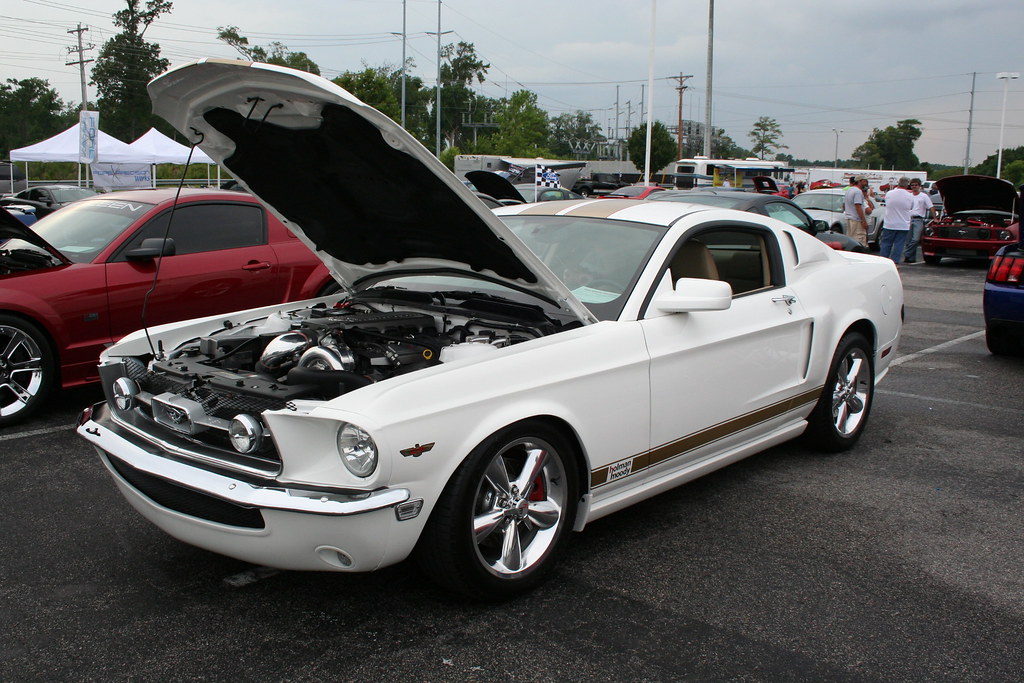
13. Widespread Rear Axle Leak Issues Affecting All S197 Models
Even for the later S197 Ford Mustangs, which generally benefited from improvements over their earlier counterparts, one persistent issue seems to affect the entire platform: widespread rear axle leak issues. This isn’t a problem confined to specific engine types or body styles; it’s a common high-mileage woe that Mustang owners across the S197 spectrum need to be aware of.
The primary culprit behind these leaks is often a failing rear axle pinion seal. This small but vital seal is responsible for preventing the lubricating gear oil from escaping the differential housing. Over years of use, cycles of heating and cooling, and constant rotational stress, these seals can harden, crack, or simply wear out, leading to fluid seepage that can range from a minor annoyance to a significant problem if left unaddressed.
While a small leak might seem innocuous, it can eventually lead to insufficient lubrication within the rear differential. This can accelerate wear on critical components like gears and bearings, manifesting as unusual noises from the rear end, increased friction, and ultimately, premature failure of the axle assembly. The implications extend beyond just repair costs; a compromised rear axle can affect your Mustang’s performance, handling, and even safety under certain driving conditions.
As with any fluid leak, vigilance is absolutely key. Regularly checking under your S197 Mustang for any tell-tale signs of oil spots or wetness around the rear differential is a crucial preventative measure. Integrating this into your “general maintenance of a high mileage vehicle” routine, alongside “checking and replacing fluids” and proactively looking “out for leaks and replace them if there is any,” can save you from a much larger, more expensive repair down the road. A little attention now can prevent a big headache later.
Having journeyed through the labyrinth of common high-mileage problems, particularly those afflicting our beloved S197 Mustangs, it’s clear that owning one of these seasoned machines is a commitment. It’s a relationship built on vigilance, a dash of automotive know-how, and a willingness to get your hands dirty, or at least to know a good mechanic. But don’t let this list deter you!
Car Model Information: 2008 Ford Mustang GT Premium
Name: Ford Mustang
Caption: 2018 Ford Mustang GT 5.0
Aka: Ford T5 (Germany)
Manufacturer: Ford Motor Company
Production: March 1964 – present
ModelYears: 1965–present
Class: Unbulleted list
BodyStyle: Unbulleted list
Layout: Front-engine, rear-wheel-drive layout
Categories: 1970s cars, 1980s cars, 1990s cars, 2+2 coupés, 2000s cars
Summary: The Ford Mustang is an American automobile manufactured and marketed by Ford since 1964, as Ford’s longest nameplate in continuous production. Currently in its seventh generation, it is the fifth-best selling Ford car nameplate. The namesake of the “pony car” automobile segment, the Mustang was developed as a highly styled line of sporty coupes and convertibles derived from existing model lines, initially distinguished by its pronounced “long hood, short deck” proportions.
Originally predicted to sell 100,000 vehicles yearly, the 1965 Mustang became the most successful vehicle launch since the 1927 Model A. Introduced on April 17, 1964 (16 days after the Plymouth Barracuda), over 400,000 units were sold in its first year; the one-millionth Mustang was sold within two years of its launch. In August 2018, Ford produced the 10-millionth Mustang; matching the first 1965 Mustang, the vehicle was a 2019 Wimbledon White convertible with a V8 engine.
The success of the Mustang launch led to multiple competitors from other American manufacturers, including the Chevrolet Camaro and Pontiac Firebird (1967), AMC Javelin (1968), and Dodge Challenger (1970). It also competed with the Plymouth Barracuda, which was launched around the same time. The Mustang also had an effect on designs of coupes worldwide, leading to the marketing of the Toyota Celica and Ford Capri in the United States (the latter, by Lincoln-Mercury). The Mercury Cougar was launched in 1967 as a unique-bodied higher-trim alternative to the Mustang; during the 1970s, it included more features and was marketed as a personal luxury car.
From 1965 until 2004, the Mustang shared chassis commonality with other Ford model lines, staying rear-wheel-drive throughout its production. From 1965 to 1973, the Mustang was derived from the 1960 Ford Falcon compact. From 1974 until 1978, the Mustang (denoted Mustang II) was a longer-wheelbase version of the Ford Pinto. From 1979 until 2004, the Mustang shared its Fox platform chassis with 14 other Ford vehicles (becoming the final one to use the Fox architecture). Since 2005, Ford has produced two generations of the Mustang, each using a distinct platform unique to the model line.
Through its production, multiple nameplates have been associated with the Ford Mustang series, including GT, Mach 1, Boss 302/429, Cobra (separate from Shelby Cobra), and Bullitt, along with “5.0” fender badging (denoting 4.9 L OHV or 5.0 L DOHC V8 engines).
Get more information about: Ford Mustang
Buying a high-performing used car >>>
Brand: Ford Model: Mustang
Price: $16,785 Mileage: 81,832 mi.
The beauty of these vehicles, even with a few battle scars and potential gremlins, lies in their character and the thrill they still deliver. Informed ownership, embracing proactive maintenance, and recognizing the warning signs are your superpowers in this high-mileage adventure. With the right care and attention, these machines can continue to roar down the road, delivering joy and excitement for many more miles to come. So, go forth, armed with knowledge, and keep those ponies running strong!

